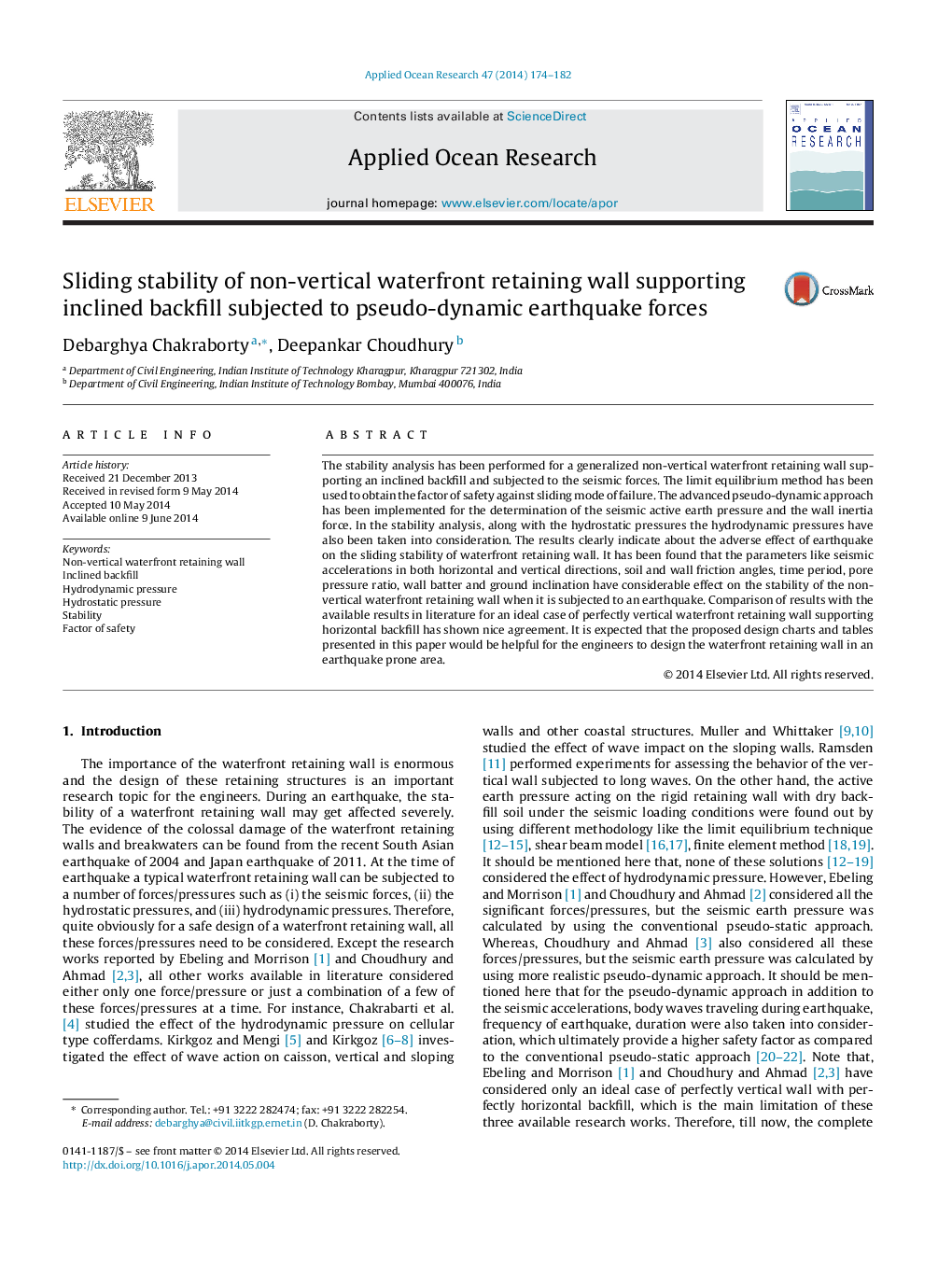| Article ID | Journal | Published Year | Pages | File Type |
|---|---|---|---|---|
| 1720050 | Applied Ocean Research | 2014 | 9 Pages |
•Stability of waterfront retaining wall subjected to earthquake.•Seismic earth pressure was calculated using advanced pseudo-dynamic approach.•The hydrostatic and hydrodynamic pressures were also incorporated.•Present results compare well with very few available existing methods.•Proposed closed-form design solution and charts can be used for design.
The stability analysis has been performed for a generalized non-vertical waterfront retaining wall supporting an inclined backfill and subjected to the seismic forces. The limit equilibrium method has been used to obtain the factor of safety against sliding mode of failure. The advanced pseudo-dynamic approach has been implemented for the determination of the seismic active earth pressure and the wall inertia force. In the stability analysis, along with the hydrostatic pressures the hydrodynamic pressures have also been taken into consideration. The results clearly indicate about the adverse effect of earthquake on the sliding stability of waterfront retaining wall. It has been found that the parameters like seismic accelerations in both horizontal and vertical directions, soil and wall friction angles, time period, pore pressure ratio, wall batter and ground inclination have considerable effect on the stability of the non-vertical waterfront retaining wall when it is subjected to an earthquake. Comparison of results with the available results in literature for an ideal case of perfectly vertical waterfront retaining wall supporting horizontal backfill has shown nice agreement. It is expected that the proposed design charts and tables presented in this paper would be helpful for the engineers to design the waterfront retaining wall in an earthquake prone area.
